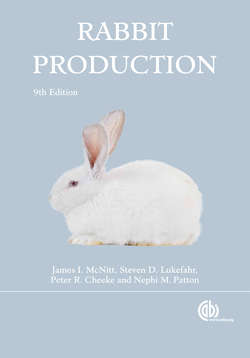Читать книгу Rabbit Production - James I McNitt - Страница 62
Feeding the Doe after Kindling
ОглавлениеDoes reduce their feed intake prior to kindling. This may in part be due to a reduced gut capacity caused by the presence of the fetuses in the body cavity. Following kindling, as lactation begins, their feed intake increases markedly. It is desirable to gradually increase the amount of feed offered to a doe for the first week or so following kindling until full feed intake is reached. Sometimes a young first or second litter doe will suddenly die when the litter is one to four days of age (young doe syndrome). This may be due to a stomach hairball, which can reduce feed intake to zero. Sometimes apparently healthy litters will suddenly die at five or six days of age. This may be due to milk enterotoxemia, caused by overfeeding the doe following kindling. Be sure not to overreact and underfeed the doe, as this may reduce milk production excessively.
If an intensive breed-back system (7 to 21 days) is used, consideration should be given to keeping a doe on full feed once she goes into production. With the advent of high fibermedium energy diets, dropping the doe back to a restricted diet during the last part of gestation after weaning the first litter may be unnecessary. In fact, the energy demands of almost continuous gestation and lactation may necessitate continuous full feeding.
